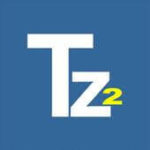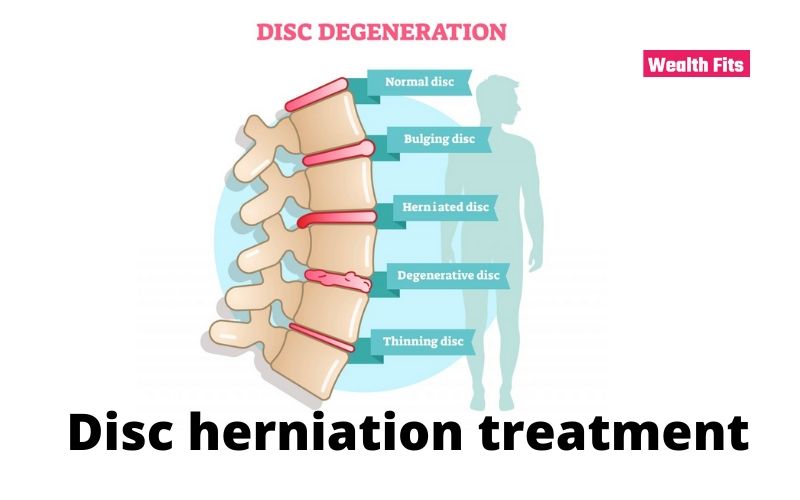Seven nannies have a child without an eye. This proverb reflects the problem of disc herniation treatment in the best possible way. Indeed, where does a good result come from if there are so many different “commanders” per illness?
Neurologist, surgeon, massage therapist, physiotherapist, orthopedic traumatologist, physiotherapist, osteopath, neurosurgeon, chiropractor, chiropractor. Ten different specialists! But the list goes on and on.
So, after all, who is involved in the treatment of disc herniation?! How not to make a mistake? After all, choosing the “wrong” specialist will not get a stable result. No wonder we recalled this proverb.
There are only two specialties of doctors who solve the problem. The remaining professions, with all due respect to them, are only auxiliary in the treatment of disc herniation. Suppose you will be treated for disc herniation by “auxiliary” specialists. Then you will never solve the problem to the end – this is a medical fact. The maximum that comes out of it. The symptoms and consequences of the disease will temporarily go away, but the disease itself will be driven deep into.
Which doctor should I go to? Who is involved in the treatment of disc herniation?
- Neurosurgeon – if you decide to treat a disk hernia surgically.
- Chiropractor – if you plan to treat a disc hernia without surgery.
And since surgery is an extreme case, let’s talk about how to avoid it and how manual therapy can achieve such impressive results in the treatment of disc herniation. But before – a little theory to know where the hernia comes from and why it “grows,” increasing in size.
Muscle corset of the spine
The spine is surrounded by muscles, which are usually called the muscular corset of the spine. The most important task of the muscle corset is to direct the load vector along the vertical axis of the spine, regardless of the position of the person: bends, twists, or bends. For simplicity, we depict a muscle corset with two muscles (Fig. 1a). Working in pairs and balancing among themselves, these muscles easily provide axial load distribution.
If the load, as expected, passes along the axis of the spine, then once it hits the center of the disk, it will evenly disperse in all directions.
- The load is evenly distributed along the axis of the spine.
- Vertebra
- Intervertebral disc
- The muscles of the corset of the spine
- The pulpous nucleus distributes the load in all directions.
- The fibrous ring dampens the load.
If we imagine this as if in slow motion, we will see that the disk is flattened, and its jelly-like core transfers the load energy to the elastic shell. The shell springs and dampens the load.
Mechanism
The described mechanism is the norm. This happens when all the muscles are healthy. But if even one of the muscles becomes ill, then it will weaken, stretch and will no longer be able to keep its side in balance
- The sore muscle under the microscope. Along with smooth, healthy fibers, diseased fibers are visible. Cramped areas lead to stretching and weakening of the fiber and muscle as a whole.
- A sick, weakened muscle does not hold the vertebrae – skew occurs.
- Skew displaces the core of the disk. This leads to an overload of the fibrous ring.
- Overload stretches the fibrous ring.
What is Muscle Pain?
There will be an imbalance in the muscle corset, followed by a series of pathological phenomena. The vertical axis of the spine will deviate. This will cause a “distortion” of the vertebrae, which will begin to squeeze the nucleus from the center to the edge (migration of the pulpous nucleus). Only the migration of the pulpous nucleus is much slower. The displacement of the core significantly increases the load on that part of the shell where it shifts. Because of this, the shell is gradually stretched and deformed (remember how the knee stretches the pants). The resulting deformation of the membrane is called protrusion of the intervertebral disc. The protrusion is the precursor to a hernia.
Disc herniation
The deformation of the shell and its tension lead to the rupture of this shell. All this is a hernia of the disk. That is how she appears. It should also be added that without proper treatment, most hernias tend to increase. This happens like this: the fibrous membrane slowly spreads, the hole in it grows, and the pulpous nucleus protrudes more and more outward.
And again, about the muscles.
Talking about the formation of a hernia, we intentionally focus on the muscles, their diseases, and the factor of muscle imbalance. In our opinion, it is the mechanical factor that is the key moment both in the development of pathology and in the treatment of disc herniation. Also, healthy muscles are not only responsible for the uniform distribution of the load, but also provide nutrition to the disk. Disrupted nutrition is another important factor and fertile ground for the formation of a herniated disc. Due to power disturbances, the disc becomes depleted, loose and unstable even to normal loads. Therefore, when we talk about the treatment of disc herniation, we need to understand that the restoration of healthy spinal mechanics is primarily due to the treatment and recovery of muscles – this is the basis of the treatment of disc herniation.
The essence of non-surgical treatment of disc herniation
Once again, we list all the stages of hernia development:
- Muscle disease and weakness;
- Imbalance of the muscle corset;
- Displacement of the vertical axis of the spine;
- Distortion of the vertebrae;
- Pulp nucleus migration;
- The critical load on a single section of the shell;
- Sheath deformation;
- Rupture of the shell.
consists of soft manual influences, which are carried out simultaneously:
- We treat muscle disease and thereby strengthen them;
- Restore the balance of the muscle corset of the spine;
- We stabilize the vertical axis of the spine.
- Gently and gently eliminate the “distortion” of the vertebrae;
The listed actions allow eliminating critical overload on a separate part of the shell and creating optimal conditions for the healing of the disc.
Please note that medicine only creates the conditions, and the disk heals completely independently. Similar to how a bone heals and heals in a fracture. In other words, manual therapy in the treatment of disc herniation is the same, providing conditions for healing of the disc as the application of gypsum for bone fusion.
What is the result? Where does a herniated disc go?
Of course, you know that gelatin swells when it is poured with water. Now imagine this process in the reverse order: water gradually evaporates from the jelly; it loses volume and dries out over time. By the way, the process of dehydration or dehydration has long been successfully used in various industries. For example, in the food industry in the manufacture of instant coffee, milk powder, instant noodles. The same gelatin and many other food products. But, interestingly, dehydration, which people have learned to reproduce artificially. It is a natural process inherent in living nature, including the human body.
We said that the inside of the disk is a jelly-like core. The keyword is jelly-like. We remember that with a hernia, part of this nucleus protrudes beyond the disc. So, during the treatment of a herniated disc, after we normalize the load on the disc, recovery processes begin to activate. This is due to the fact that the surrounding tissues actively take water from the bulging part of the disk.
At the same time
Firstly, the healing process of the membrane is ongoing. So, the fibrous fibers that make up the shell of the disc gradually germinate and “darn” the gap along with the drying part of the core. In place of the former hernia, only a scar remains. Thus, the non-surgical treatment of a hernia of the disc ends with the formation of a dense scar at the site of the former rupture that under any circumstances, repeated rupture is impossible.
In fairness, it must be said that fibrillization is a natural process. It occurs regardless of whether treatment with manual therapy is carried out or not. However, the problem is that if untreated, there is a risk that fibrillization will become uncontrollable and lead to a significant increase in scar tissue. And this is already fraught. Scars and adhesions can press no less than the hernia pressed.
Read More: Carpal Tunnel Syndrome and Exercises
What is the decisive role of soft manual therapy?
The decisive role of soft manual therapy in the treatment of disc herniation is precisely what allows the process to be directed in a controlled direction.
Soft manual therapy:
- Significantly speeds up disk recovery;
- Minimizes the risk of proliferation of scar-adhesive tissue;
- It relieves a person of those excruciating pains that usually accompany this pathology.
The treatment plan is determined based on a number of factors.
- The size and location of the hernia;
- Patient data: age, gender, presence of concomitant diseases, etc .;
- The duration of the hernia;
- Does a hernia affect nerves, spinal cord, or blood vessels;
- What pathological processes arose as a result of the existence of a hernia.
Based on the information received. In the clinic “Spina Zdorovya,” we use all the methods for the treatment of herniated discs that are available for mild manual therapy.
Disc herniation prophylaxis
To avoid relapses – you need, for starters, get rid of the disease completely. And then – reduce risk factors. Create comfortable conditions for sleeping and working. Keep track of your weight and proper nutrition.
Maintain your physical activity. But, most importantly – do not neglect your health and do not save on it. Do not let things drift. After recovery, try to do at least one maintenance session of soft manual therapy every three to six months – this will help to significantly reduce risk factors. So, do not forget, a running disk hernia threatens with surgery. Remember, your health is first of all necessary for you!
The benefits of disc herniation treatment in the clinic “Back is healthy.”
- Guaranteed full and qualified treatment. The word “full” is the key to our work.
- High qualification and extensive practical experience – over 25 years.
- We consider each case individually and comprehensively – no formalism.
- The effect of synergy.
- Guarantee of fair treatment and fair prices.
- Location a stone’s throw from the metro in the very center of Moscow.
Surgery is the only way out in some cases.
The prospect of surgical treatment for hernia scares many patients. And this is understandable – the operation cannot but scare. Any surgical operation is a certain risk. Therefore, when carrying out it, you should contact only specialists with extensive experience and in a reputable medical institution.
Firstly, the operation, no matter what features it has, has its drawbacks and advantages. So, the undoubted advantage of surgical methods for the treatment of hernias of the spine is an almost instantaneous positive effect after surgery. Immediately after removal of the hernia, all the symptoms that torment the patient disappeared.
In addition, among the disadvantages of surgical treatment, it is possible to note the likelihood of recurrence of the disease and the occurrence of a hernia at an adjacent level, postoperative adhesion process. The risk of recurrence is from 1.4 to 4% of cases, that is, in 96-98.6% of cases of recurrence does not occur. But if this happened, then repeated surgery eliminates this problem in almost a hundred percent of cases, as for the occurrence of a hernia in a neighboring segment. A hernia of the intervertebral disc is a complication of osteochondrosis. Then it does not perform the shock-absorbing function, and the load falls on neighboring segments.

